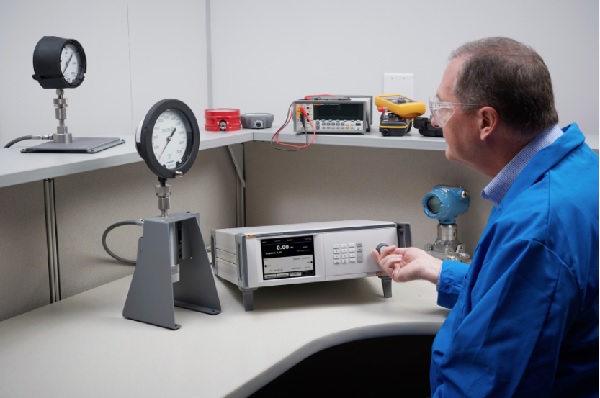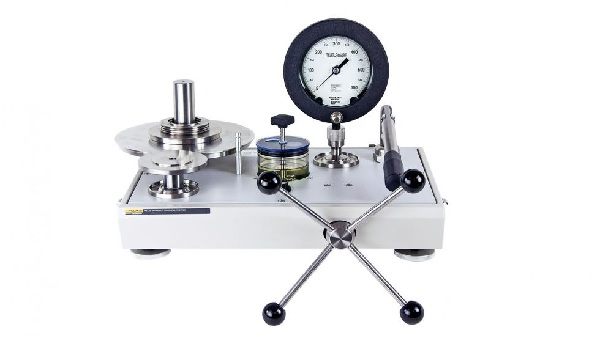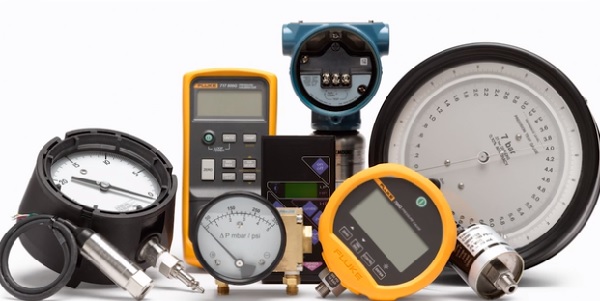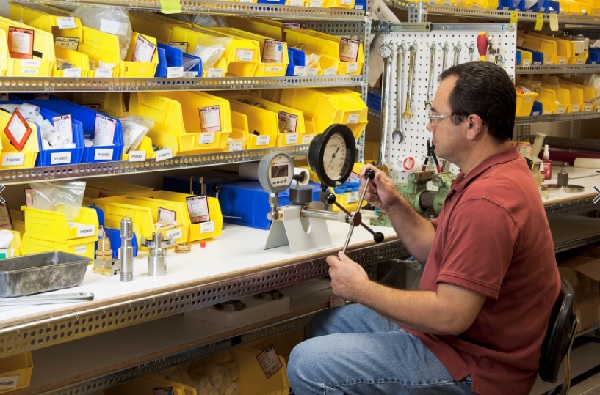- Other Fluke companies:
- Fluke
- Fluke Biomedical
- Fluke Networks
- Fluke Process Instruments
What to look for in a pressure gauge calibration standard? It depends.

One of the most frequently asked questions I hear from customers is “what is the best type of calibration standard for analog pressure gauge calibration or digital pressure gauge calibration?” My initial answer is always the same…”it depends.”
The only way to fully answer that question is to dig deeper into the details of your specific workload. There are a lot of variables that effect the pressure calibration standard you choose. The following is a list of key questions that can guide you to choosing the best pressure calibration standard for your application.
1. Should I use analog or digital pressure standards for pressure gauge calibration?
These days most pressure calibration standards are digital while the pressure gauges you’ll be calibrating are often a mix of analog and digital. Analog pressure standards have largely been replaced by digital standards because digital provides better accuracy, ease of maintenance and are easier to read. So it’s quite common to use a digital standard for both analog pressure gauge calibration or digital pressure gauge calibration.

2. What type of pressure media does the calibration standard use?
Some pressure calibration standards use liquids, some use gas, and some use compressed air. As a general rule, lower pressures are easier to achieve with a gas—air or nitrogen—because it is compressible. Higher pressures are typically easier to achieve with a liquid media because—at least for our purposes—it is non-compressible.

But those are not hard and fast rules. There are other considerations to think about. For example, can the devices you’re calibrating tolerate liquid? If they can tolerate liquid—which liquid? If you’re calibrating an analog pressure gauge that’s used to measure the pressure of drinking water, you won’t want to contaminate it with a petroleum-based calibration medium.
Likewise can the standard itself tolerate liquid? Some can, some can’t. Some can tolerate intermixing a slight amount of oil and water, some may not. Some devices may be easier to clean than others. Analog pressure gauges tend to be a bit harder to clean because of their closed end design and the small volume of the bourdon tube.

3. What range of pressures do you need to cover?
The quick answer is, you need to cover everything in your workload; but that doesn’t necessarily mean you need several standards. Depending on the standard you choose, you may be able to do more with less. The wider the pressure range you need to calibrate, generally, the more complex and more expensive the standard you would need. However, a more accurate calibration standard may end up being more efficient and costing less overall than if you purchased multiple lower accuracy instruments.
A higher accuracy instrument that replaces three lower accuracy instruments may cost less than the combined price of those three standards, so you could save in upfront costs. In addition, a more accurate and complex standard can actually simplify processes and reduce mistakes. If your calibration workload can be covered by one standard, it saves operators from choosing the wrong standard, and perhaps performing bad calibrations.
4. How should I determine what accuracy I need?
Sometimes people confuse accuracy with resolution. In the context of pressure calibration standards, accuracy refers to how far the calibration standard deviates from the true value. Resolution indicates the number of decimal places the calibration standard will display. More decimal places do not necessarily indicate higher accuracy. They are two separate specs.
5. How do I compare accuracy specs?
An important element of accuracy is making sure your workload specs are all expressed in the same accuracy language. If you have a varying workload it may be worth the time to convert all items to the same accuracy language, so they’re all expressed in the same way. This saves times and errors in determining the right standard to use.
The accuracy of some analog gauges is specified in grades, such as A, B, or 1A. For others, accuracy is specified as a certain percentage of operation. This could be the percentage of maximum reading of the gauge, or the percent of portions of the gauge. In the latter case accuracy is expressed for the upper and lower quarters and the middle half of the gauge in an X-Y-X format. Still other gauges might have accuracy requirements specified as a number such as +/- 10 PSI.
This makes calibration extremely labor intensive for calibration technicians with hundreds of these devices to calibrate all expressing accuracy in slightly different ways. You can make your life much easier by creating a table in Excel or on paper and converting every instrument to the same language. It might be more work upfront, but it will save time on your next calibration, and will help ensure that you specify the correct calibration standard for your workload.
For example, converting a “100 PSI +/- 1 PSI gauge” to a “0.05% scale 300 PSI standard” on the fly is confusing. You can instead create a table and compare apples to apples. In this case we will pick a common language of expressing the error factor of PSI.
- The 100 PSI gauge is +/- 1 PSI
- The 300 PSI standard is (0.05% * 300) = +/- 0.15 PSI
- Dividing the gauge accuracy by the standard accuracy shows the standard is 6.6 times better than the device
Most process calibration workloads include multiple copies of the same instrument for duplicate applications, such as an assembly line. So you only have to convert the pressure gauges for one assembly line to the same language and then apply it to the other identical assembly lines.

6. What is the cost of ownership for those standards?
Be sure to take into account the recurring maintenance costs for the calibration standards you choose. Calibration standards themselves need to be calibrated. The calibration costs for a smaller number of higher accuracy standards may actually be less than the calibration cost for a higher number of lower accuracy instruments, which means you can make up the difference in upfront costs within a few calibration cycles.
7. How often do pressure gauges need to be calibrated?
The simple rule in regard to the frequency of calibrating pressure gauges is to follow the manufacturer’s recommendation. However, there are some special cases where you could extend the interval a bit. A good reason for doing this would be if you have a proven track record with calibrating a specific device. For example, you might chart the drift of an instrument over a period of time, and based on that data you are confident that you no longer have to calibrate the instrument annually, but can extend it to two or three years and still be safe.
Another instance where you might be able to extend the calibration cycle of an instrument is for a gauge that has one special application and is used very rarely. You might only calibrate it right before you use it. The advantage of extending calibration intervals is that it saves time and money, but only if you are confident that you are not risking the safety or accuracy of your equipment.
Related Resources and Products
Learn more about pressure calibration standards
If you have more questions about how to choose the right pressure calibration standard or any other topics related to pressure calibration, you can reach me by phone at 877-355-3224 or email at john.lopez@flukecal.com. We also have extensive free online learning resources, including our Education Hub, filled with content you and your staff can consume at home, as well as live and on-demand webinars.
Related products
P3100 Hydraulic Deadweight Testers
8370A and 8270A Modular High Pressure Controllers/Calibrators
- Home
- Products
- New Products
- Electrical Calibration
- RF Calibration
- Data Acquisition and Test Equipment
- Temperature Calibration
- Humidity Calibration
- Pressure Calibration
- Flow Calibration
- Process Calibration Tools
- Calibration Software
- Service and Support
- All Calibration Instruments
- Purchase Info
- News
- Training and Events
- Literature and Education
- Service and Support
- About Us


